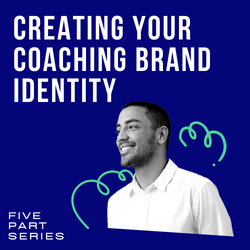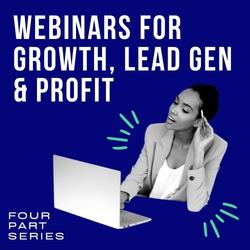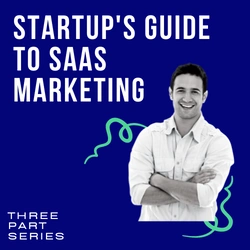Updated: December 30, 2020
Marketing vs Advertising: What’s The Difference, And Which is Best For Business Growth?
Table of Contents
If you think these words are interchangeable, most likely you’re doing either very well. Harsh, perhaps, but in my experience, I’ve learned that many people don’t know the fundamental difference between marketing and advertising.
They say that they want sales or leads or need three times the return on their marketing dollars. Or my personal favorite, when a client is surprised as to why a digital marketing firm can’t guarantee twice as many sales using their services.
Now these are all very valid ambitions for any business, of any size, but the precise path you must walk to accomplish these results is frequently misunderstood.
Let’s be honest about the marketing industry.
The marketing industry loves to complicate the meaning of terms like marketing and advertising. And the Internet itself hasn’t helped with this. Over the years, the Internet is permanently revolutionized the entire marketing industry, causing both terms to become hazy. To explain both as simply as I can, I’m going to give you two definitions for each.
The first is the actual textbook definition from a college marketing course for both. The second is the real-world industry description, with a far more inclusive and modern explanation of the still present differences of both terms. And finally, we’ll discuss which one will best suit your business needs.
Let’s begin with advertising.
Advertising is the process of buying advertisements to promote your business. It’s a simple definition featuring two big words; advertisements and promotion. You must buy advertisements on media outlets to promote your business. Once you stop buying, your business fades away. In other words, when you advertise you are making a transaction with the expectation of gaining a larger transaction in return which is sales revenue.
Fortunately, effective advertising can allow you to be extraordinarily successful at growing your business revenue. If you offer a great product or service, you can grow your sales revenue with the right ad strategy, sales funnel, and compelling offers. And thanks to the internet there are now many low-cost avenues you can exploit almost instantly such as Facebook or Google Ads.
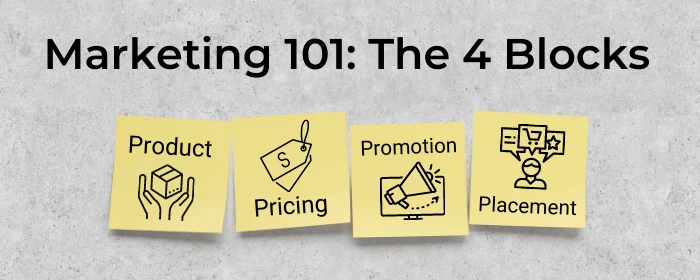
What about the downsides of advertising?
As I mentioned earlier, the moment you stop buying those advertisements, then your business virtually disappears. If your business relies solely on ads to acquire customers, then your entire business is at the mercy of the media outlets you advertise on. What happens if that media platform goes out of business or doubles their ad rates next quarter? This type of economic dependence means you must constantly adapt your advertising strategy. You must always look for new channels to advertise on and new promotions you can run to bring in new sales.
In addition, the media prices for advertising rise based on competition and current bid, as more competitors advertise on a single media outlet their prices for ad placements will rise over time.
So, what’s the big takeaway from this? If you rely solely on advertising to grow your business, your continued existence and success is at the mercy of the media platforms you advertise on.
For example, if you grew your business to 10 million a year in revenue by using only Google Ads while costs were low, then what would you do as their costs continue to skyrocket over the years? Initially you may decide to increase your prices to compensate for your higher ad spend, but eventually that simply won’t be an option. At some point, your prices will become too high, and you’ll price yourself out of the market.
Now you could take fewer profits in your business, but that would only work temporarily, as eventually the businesses with the largest advertising budgets are going to win. A $10 million dollar a year company may sound like a lot, but you can’t compete with a giant national competitor who spends $10 million a week in digital advertising.
Therefore, the best advertising strategy for small businesses would be to find low-cost advertising channels that are not saturated with competition.
Ultimately, advertising can be highly effective in the short term, but it should not be seen as a permanent solution to growing any business.
Let’s discuss marketing.
If advertising is the process of buying advertisements to promote your business, then what is exactly is marketing? Marketing is that and more. Where advertising is a single process: promote and make sales. Marketing is more encompassing and is all about finding out what people want and giving it to them.
Specifically, you need to find out what product people want and not what product you think they want. You then need to find out the price they are willing to pay and not the price you want to charge. You need to determine where these potential buyers are and how you can position your company in their direct line of sight. Finally, you promote your business through content or advertising.
According to every Intro to Marketing college textbook, advertising is merely a subset of marketing. Marketing professors would tell you about the four building blocks that make up marketing: product, pricing, promotion, and placement.
Advertising is the promotion. It’s simply the promotional activities that fall within your marketing mix.
Marketing is far broader and includes all facets required to acquire customers. Marketing is data-driven and includes advertising but also includes things like the product itself, service, pricing strategies and where your customers are and how to connect with them and keep them engaged.
Advertising alone is not an effective long-term plan to grow your business. You can use advertising on its own to grow your sales, but that’s all. If you want to grow a brand you must combine advertising with other marketing activities.
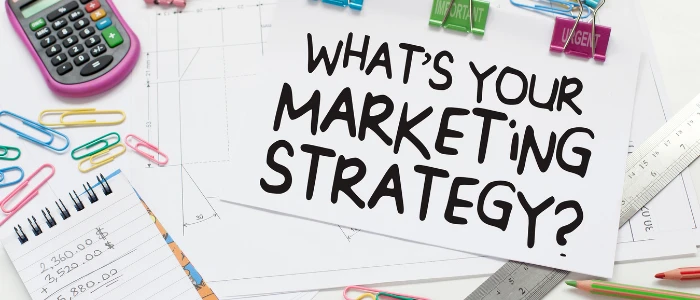
People are becoming numb to most advertising.
A real marketing strategy includes finding out what people want and giving it to them. Currently, people want value and quite honestly, people are becoming numb to the advertisements they encounter daily.
The average person sees at least 3,000 advertisements per day. And that’s on the low end. Active social media users see an average of 5,000 ads daily. They’re becoming so immune to ads that more and more creativity is required of the advertiser to make an impact and get noticed.
In fact, the required level of creativity needed to successfully advertise your business is rising by the day. Just five years ago, most people didn’t expect to see a professional video sales letter for every product, but now they do, and those videos convert better than anything else. And now you need a professional video or real photography to run effective ads on Facebook. Without either of those, your ads won’t stand out and won’t receive any attention or engagement. That means wasted ad spend.
Because of this, advertising in the traditional sense has become less and less effective. Ads that are not stellar just don’t work anymore, and simply running ads and telling people to “buy it now” doesn’t work either. To compete, marketers have moved away from relying only on advertising and are now investing in all around marketing strategies.
Currently, marketers are focusing on inbound marketing instead of outbound marketing. Inbound marketing shifts the traditional advertising model and instead of relying on sales to determine success rate, the main catalyst of your success is about attraction and engagement.
The best way I can explain inbound marketing quickly is with an example. Let’s say you’re a single woman hitting the dating scene, and you’re eager to find your soulmate. Online apps waste your time, and you’re looking for something a bit more real, so you turn to inbound dating (that’s not an actual thing, I just coined the phrase for this example). That means you do your research; you find out where the types of men you’re interested in are, maybe you stop in quick and get a sense of the atmosphere, you dress appropriately and wear the right scent. You do your homework, and you act accordingly on the data to increase your odds.
Translating this example into marketing, you can attract your customers to you through things like content marketing and seo. Content marketing is all about adding value to your customers by engaging them with informative and helpful content in various formats. That adds value to their lives, builds their trust in you, and establishes your reputation and authority on the subject. All of that ultimately leads to them buying your products and services.
Content doesn’t sell. Content attracts and builds relationships.
SEO or search engine optimization on the other hand is how you get found. Similar to the dating example, if you’re attractive but no one sees you, there won’t be many dates in your future. It’s the same in business these days. If you create great content but no one can find it, you’re not going to get any customers. SEO is the process of improving your website’s organic position in search results. When someone types in a search for anything relating to your product or service, you want to be in the top three (top 5 at the very least).
In short, content provides answers to their biggest questions and solutions to their biggest problems, while SEO helps them find these answers and solutions. Both of this inbound marketing activities will help you accomplish the goal of building and growing your business.
On the other hand, you can do outbound marketing, which involves you being the person to initiate that conversation. For example, if you’re a single man looking for a woman then instead of passively waiting on someone to contact you, you may choose to seek them out directly.
Translating this to outbound marketing; you may decide to prospect your ideal customer, find out where they are and try to make contact to see if you can impress or engage them. You know that if you can make a positive impression on them, then you’ll have a good chance to present your product.
Let’s settle the debate once and for all.
Which is best for your business, marketing, or advertising? The answer ultimately depends on your goals and your risk tolerance. Marketing is the most effective way to grow your business revenue in the long run, and it’s also more affordable. So instead of spending dollars on advertising, you could spend your time or spend money to buy other people’s time who are good at advertising. However, the downside to marketing is that it can take 6 to 12 months for it to start working and if your business cannot afford a six-month marketing campaign without financial stress than advertising suddenly becomes your only option.
Advertising on the other hand works quickly. Oftentimes, the moment you launch an ad campaign you get exposure immediately and with the right strategy advertising can generate sales for you consistently. However, your long-term risk is much higher with advertising. After all, once you’ve spent thousands of dollars in advertising, you’ll either have lots of sales or nothing at all. And don’t forget about the weaknesses we discussed earlier relating to advertising versus marketing.
Of course, with marketing, the content and assets you develop along the way will have a much longer shelf life and deliver more value over the long term. Whereas with advertising you get short term rewards, but the financial risk is higher, especially for startups.
Ultimately, here’s my recommendation. If money isn’t a major concern, invest in both advertising and marketing. This hybrid strategy will allow you to use inbound marketing to build towards a promising future for your business, while the advertising will fuel your short-term cashflow and momentum.
If money is an issue, or you’re willing to put up with six lean months, I suggest you go the distance with marketing. I recommend you build a system that will pay dividends for years to come, rather than pushing ad spend into advertising campaigns that may or may not work.
If you can’t go the distance or find yourself unable to be patient, use advertising exclusively. While that does mean you’ll likely go out of business in the long-term, you will make profit quickly. I suggest you pour as much back into your successful advertising campaigns as you can to maximize short-term profit and cash out within two years.
Let’s do a quick review.
We talked about advertising versus marketing. Advertising is the process of buying advertisements to promote your business. Marketing is finding out what people want and giving it to them. We also determined that both advertising and marketing would be best for your business. Of course, if you must choose, go with long-term marketing (it literally has the words long-term in it) as it will always be more cost-effective and will allow you to build a brand based on longevity and reputation rather than short-term sales.



It’s the sales page where the magic happens. This is the page that gives you a return on your marketing investment. It is on this page where we convert visitors to paying customers. Do you know the valuable elements of a high-converting sales page? You will soon. Keep Learning >

Content marketing is the backbone of the biggest success stories over the last decade. I’m referring to companies like Zomato, Canva, ThinkGeek, HootSuite and even Blendtec. It’s not surprising that so many brands are focusing on content marketing, given the average ROI is twice any other type of digital marketing. Keep Learning >
